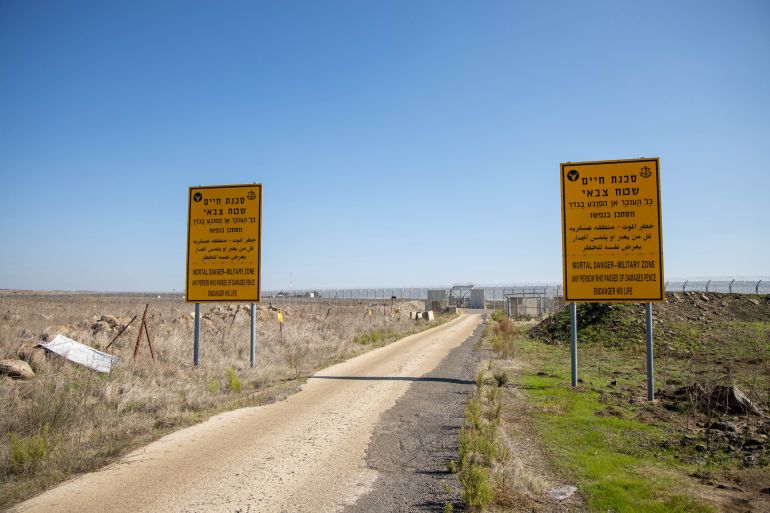Israel army says it hit Syrian ‘structures’ in Golan Heights
The announcement came after two people were reportedly killed in an Israeli attack near the Syrian town of Beit Jinn.

Israel’s military has said its tanks fired on two Syrian structures in the Golan Heights in what the army said was a violation of a 1974 disengagement accord between the two countries.
“The strike was carried out after IDF [Israeli army] soldiers identified the two structures in the area of the security zone yesterday,” the military said in a statement on Thursday.
Keep reading
list of 3 itemsThree wounded in new anti-Assad protest in Syria’s Sweida: Activists
Antigovernment protesters tear down picture of al-Assad in Syria’s Sweida
“The IDF holds the Syrian regime responsible for all activities occurring within its territory and will not allow any attempts to violate Israeli sovereignty,” it said.
The strike targeted a location on the Syrian side of the demarcation line between the Israeli-occupied Golan Heights to the west, and Syrian-controlled territory to the east.
The announcement from Israel’s military came after at least two people were killed while riding a motorcycle near the Syrian town of Beit Jinn, about an hour north of where the tanks struck, two Palestinian sources and one Lebanese security source told the Reuters news agency.
The two Palestinian sources accused Israel of conducting a strike to target the two men, whom the sources identified as “militants”.
Israel’s military declined to comment on the reported motorcycle strike.
But on Thursday, The Syrian Observatory for Human Rights (SOHR), an opposition war monitor, had reported that an Israeli drone had killed two men belonging to the Islamic Jihad organisation in the area.
“Two members of Al-Jihad Al-Islamy Movement [Islamic Jihad] were killed in an attack by an Israeli drone on Baet Jen [Beit Jinn] area in western Rif Dimashq, near the border with the Syrian occupied Golan,” the war monitor said in a statement.
The Golan Heights – a hilly 1,200 square kilometre (463 square miles) plateau that also overlooks Lebanon and borders Jordan – is Syrian territory that was occupied by Israel in 1967, after the latter captured the area in the Six Day War, before annexing it in 1981.
That unilateral annexation was not recognised internationally, except by the administration of former US president Donald Trump, and Syria demands the return of the territory.
Syria tried to regain the Heights in the 1973 Middle East war, but was thwarted. Israel and Syria signed an armistice in 1974 and the Golan had been relatively quiet since.
A United Nations force continues to patrol an 80km (50-mile) long buffer zone between the Israel-occupied Heights and the Syrian side.
In 2000, Israel and Syria held their highest-level talks over a possible return of the Golan and a peace agreement. But the negotiations collapsed and subsequent talks also failed.
More than 40,000 people live in the Israeli-occupied Golan, more than half of them Druze.
After annexing the Golan, Israel gave the Druze the option of citizenship, but most rejected it and still identify as Syrian. Approximately another 20,000 Israeli settlers also live there.
Over the past decade Israel has carried out air attacks against suspected Iranian-sponsored weapons transfers and personnel deployments in neighbouring Syria, often leading to casualties among Syrian military personnel and foreign fighters.